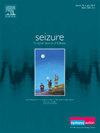培南帕尼对儿童和青少年癫痫患者的实际有效性和安全性:至少随访一年的荟萃分析。
IF 2.7
3区 医学
Q2 CLINICAL NEUROLOGY
引用次数: 0
摘要
背景介绍培南帕奈是第一种以AMPA受体为靶点的第三代抗癫痫药物,已被用于治疗局灶性癫痫发作(伴有或不伴有继发性全身性癫痫发作)和原发性全身强直-阵挛发作患者。本研究的重点是在实际环境中对至少随访 1 年的儿科患者使用 perampanel 的有效性和安全性:我们系统检索了 PubMed、EMBASE 和 Web of Science 上 2024 年 4 月 27 日之前发表的真实世界研究。我们使用 R 软件(4.2.1 版)提取并分析了相关数据:从检索到的 1181 条引文中,有 25 条涉及 2985 人的记录被纳入荟萃分析。从22项研究中汇总的50%应答率为55.0%(95% CI:46.1-63.8%),有显著证据表明研究间存在异质性(I2 = 93%,P < 0.01,τ2 = 0.038)。从 22 项研究中汇总的无癫痫发作率为 28.9%(95% CI:19.6-39.1%)。20项研究报告了perampanel治疗的保留率,汇总比例为71.1%(95% CI:61.1%-80.2%)。从 23 项研究中汇总的不良事件发生率估计值为 29.0%(95% CI:23.4-34.9%)。根据随访时间(12个月或≥24个月)进行了分组分析:结论:在中长期随访中,佩兰帕奈治疗儿童和青少年癫痫的耐受性和有效性普遍良好。随着时间的推移,儿童和青少年50%的应答率有所提高。在至少24个月的随访中,保留率和无癫痫发作率不如12个月的随访那么持久。在临床实践中应监测不良事件,尤其是精神和行为方面的不良事件。本文章由计算机程序翻译,如有差异,请以英文原文为准。
Real-world effectiveness and safety of perampanel for children and adolescents with epilepsy: A meta-analysis with at least 1-year follow-up
Background
Perampanel, the first third-generation anti-seizure medication targeting the AMPA receptor, has been used in the treatment of patients with focal seizures, with or without secondary generalized seizures, and primary generalized tonic-clonic seizures. This study focused on the effectiveness and safety of perampanel for pediatric patients with at least 1-year follow-up in real-world settings.
Methods
We systematically searched PubMed, EMBASE, and Web of Science for real-world studies published before April 27, 2024. The data of interest were extracted and analyzed using the R software (version 4.2.1).
Results
From 1181 retrieved citations, 25 records involved a total of 2985 individuals were included in the meta-analysis. The 50 % responder rate pooled from the 22 studies yielded an overall 55.0 % (95 % CI: 46.1–63.8 %), with significant evidence of between-study heterogeneity (I2 = 93 %, P < 0.01, τ2 = 0.038). The seizure-free rate pooled from 22 studies yielded an overall rate of 28.9 % (95 % CI: 19.6–39.1 %). Twenty studies reported the retention rate of perampanel treatment with a pooled proportion was 71.1 % (95 % CI: 61.1–80.2 %). The estimate of the adverse events incidence rate pooled from the 23 studies yielded an overall 29.0 % (95 % CI: 23.4–34.9 %). Subgroup analyses were conducted based on follow-up time (12 months or ≥ 24 months).
Conclusion
Perampanel is generally well tolerated and effective in the treatment of epilepsy in children and adolescents with mid-long-term follow-up. The 50 % responder rate in children and adolescents improved with time. The retention rate and the seizure-free rate during at least 24 months of follow-up were not as sustained as those in 12 months of follow-up. Adverse events, particularly psychiatric and behavioral, should be monitored during clinical practice administration.
求助全文
通过发布文献求助,成功后即可免费获取论文全文。
去求助
来源期刊

Seizure-European Journal of Epilepsy
医学-临床神经学
CiteScore
5.60
自引率
6.70%
发文量
231
审稿时长
34 days
期刊介绍:
Seizure - European Journal of Epilepsy is an international journal owned by Epilepsy Action (the largest member led epilepsy organisation in the UK). It provides a forum for papers on all topics related to epilepsy and seizure disorders.
 求助内容:
求助内容: 应助结果提醒方式:
应助结果提醒方式:


